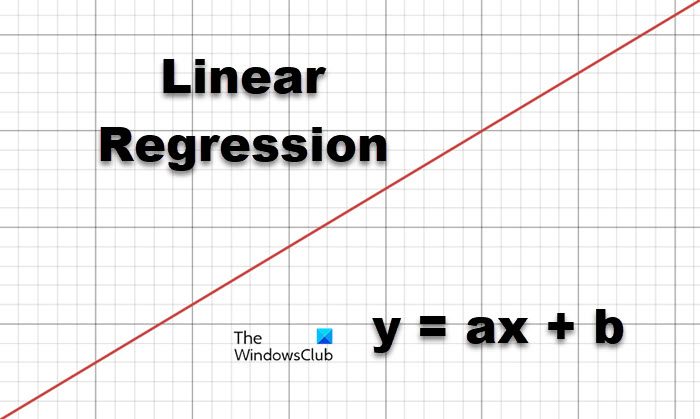If you want to leverage the power of artificial intelligence and machine learning, you must be acquainted with some of the best Machine Learning Models. There are dozens of machine learning models, so it can be a bit confusing when picking machine learning models for a project. In this post, we will talk about some of the best Machine Learning Models you can use depending on your project.
Best Machine Learning Models to know
We have the list of Machine Learning Models and algorithms for the following project, instances, and scenarios.
Machine Learning Models for time series forecasting

In data analysis, time series forecasting relies on various machine learning algorithms, each with its own strengths. However, we will talk about two of the most used ones.
- Long Short-Term Memory Network: Long Short-Term Memory (LSTM) networks are a type of Recurrent Neural Network (RNN) that are particularly effective in learning from sequences, making them well-suited for time series data. Unlike traditional RNNs, which struggle with long-term dependencies due to the vanishing gradient problem, LSTMs can retain information over long periods. This is accomplished through their unique architecture, which includes gates to manage the flow of information, enabling them to capture intricate patterns in time series data.
- Randon Forest: Random Forest is an ensemble learning method (here two or more learners). During training, it builds multiple decision trees and then averages their predictions. Although it’s not originally meant for time series, it can be adjusted for forecasting by including lagged variables. Random Forest can handle many features and is less likely to overfit, making it a strong choice for complex datasets.
You can integrate these two models and a few others, such as VAR, ARIRA, and Prophet Models, to achieve the best possible result.
Machine Learning Models for Stock Prediction

Stocks are random, yet at the same time, this randomness has a pattern, too. If your project aims to make a stock prediction, we recommend using either or both of the models mentioned below.
- Decision Tree: A decision tree is a kind of flowchart that helps in making decisions or predictions. It has nodes for decisions or tests on attributes, branches for the outcomes of these decisions, and leaf nodes for final outcomes or predictions. Each internal node represents a test on an attribute, each branch represents the result of the test, and each leaf node represents a class label or a continuous value.
- Neural Network: Neural networks are computer models that imitate the intricate functions of the human brain. They consist of interconnected nodes or neurons that process and learn from data. This enables tasks such as pattern recognition and decision-making in machine learning. If you train them well, they can function as masters of stocks.
However, you need to remember that figuring out stock patterns can be very tricky, so one should not be too reliant on these models and incorporate others, such as Randon Forest and LSTM.
Machine Learning Models for Multiclass Classifications
Now, let us discuss one of the most common machine learning jobs: Multiclass classification. Here, our job is to draft a model that, with the help of previous data, can look at a piece of information and classify it. The model analyzes the training dataset to find unique patterns for each class. It then uses these patterns to predict the category of future data. Two of the most common algorithms and models are mentioned below.
- Support Vector Machine (SVM): The Support Vector Machine (SVM) is a powerful machine-learning tool used for classifying information, detecting outliers, and making predictions. It can handle both simple and complex tasks, such as identifying spam, analyzing genes, or recognizing faces in images. SVMs are good at working with lots of information and finding patterns, so they are useful in many different areas. By virtue of all these facilities that it provides, it can be used to monitor data and classify them.
- Naive Bayes: The Naive Bayes algorithm can be used for classifying problems with more than two classes. It includes Multinomial Naive Bayes, Bernoulli Naive Bayes, and Gaussian Naive Bayes. Naive Bayes classifiers are a group of classification algorithms based on Bayes’ Theorem. They are not just one algorithm, but rather a family of algorithms that all follow the same principle: every pair of features being classified is independent of each other.
You can also use the Neural Network (the details mentioned above) for this feature.
Machine Learning Model for Regression

Regression is used to predict continuous value, one of the most needed features. That is why there are various algorithms at play here. The following two are the ones that you should start with.
- Linear Regression: Linear regression is a widely used algorithm in machine learning. It involves selecting a key variable from the dataset to predict the output variables, such as future values. This algorithm is suitable for cases with continuous labels, like predicting the number of daily flights from an airport. The representation of linear regression is y = ax + b.
- Ridge Regression: Ridge Regression is another popular ML algorithm. It uses the formula y = Xβ + ϵ. In this case, ‘y’ represents the N*1 vector of observations for the dependent variable, while ‘X’ is the matrix of regressors. The regression coefficients are denoted by ‘β’, which is an N*1 vector, and ‘ϵ’ stands for the vector of errors.
There are other regression techniques that you can use such as Neural Network Regression, Lasso Regression, Random Forest, Decision Tree Regression, SVM, Polynomial Regression, Gaussian Regression, and KNN Model.
Machine Learning Model for Small Datasets
If you are dealing with a small dataset, there are a few ML models that you can use.
- Elastic Net: Elastic Net is a technique that combines Lasso (L1) and Ridge (L2) regression methods to handle scenarios with multiple correlated features. It strikes a balance between Lasso’s sparsity and Ridge’s regularization. The reason why Elastic Net is used for small datasets is it is better when dealing with highly correlated predictors. Also, because it combines both L1 and L2 regularization, it can prevent you from overfitting more effectively as compared to models that just use one form of regularization.
- Single Hidden Neural Network: In the case of Single Hidden Neural Network, there is just one input and one output neural network layer. The simplicity makes it easier to implement and understand data, which is what we need when dealing with small datasets. Also, it makes it easier to generalize and interpret information.
Various other models can be used for small datasets, such as linear discriminant analysis, Quadratic Discriminant Analysis, and generalized linear model, which are some of the most useful ones.
Machine Learning Model for Big Datasets
Processing large datasets, or big data, holds the potential for valuable insights but poses unique challenges. You can use any of the models we discussed earlier, baring the ones mentioned for the small and big datasets. However, the biggest problem here is processing such a large amount of data. So, the models and algorithms mentioned here aim to process a huge amount of data.
- Batch Processing: Batch processing is a technique where a large dataset is divided into smaller datasets (batches or packets), and the model is trained on each batch incrementally. This method helps prevent overfitting, a common problem with large datasets, and makes the training process more manageable.
- Distributed Computing: Distributed computing means spreading out data and tasks across several machines or processors to speed up the training of large and complex machine learning models. Frameworks like Apache Hadoop and Apache Spark provide strong platforms for distributed computing.
You can also use some of the other ML models, such as linear regression and neural networks, for large datasets.
Read: Behavior monitoring & Machine Learning behind successful Dofoil diffuse
What is the best machine learning model?
Various machine learning models include Naive Bayes, KNN, Random Forest, Boosting, AdaBoot, Linear Regression, and more. However, the model you must pick depends on the situation or the project you are working on. We have mentioned some of the instances above and the best models and algorithms to use.
Read: Machine Learning and Deep Learning in Artificial Intelligence explained
What are the 4 machine learning models?
The four machine-learning models are the supervised learning model, unsupervised learning model, semi-supervised learning model, and reinforcement learning model. Each has its own perks, so they should all be used together.
Also Read: Deep Learning and Neural Network.